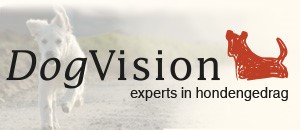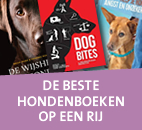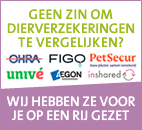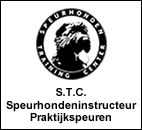Belangrijke mededeling i.v.m. Covid-19
 Over Sue Sternberg
Over Sue Sternberg
Als we voor een spreker veel verzoeken hebben binnen gekregen dan is het Sue Sternberg wel! Met trots kunnen we melden dat Sue in 2020 naar Nederland komt! Met haar ruim 35 jaar ervaring is Sue één van de grote spelers op het wereldtoneel als het over honden en hondengedrag gaat. Sue Sternberg studeerde 35 jaar geleden af aan de universiteit van Massachusetts. Ze heeft een indrukwekkende staat van dienst opgebouwd; ze werkte bij meerdere asielen en heeft daardoor veel ervaring met asielhonden en gedragsevaluaties. Ze is specialist temperament analyses en heeft gewerkt als gedragsdeskundige bij o.a. de ASPCA. Tevens is zij actief in de hondensport en heeft meerdere titels op haar naam staan. Ze heeft deelgenomen aan velen wedstrijden, denk hierbij aan gehoorzaamheid, behendigheid, tracking, neuswerk en schapen hoeden.
Sue staat het meest bekend om haar werk met asielhonden. In 1993 opende ze haar eigen dierenasiel in New York en zette meerdere nationale programma’s op om het welzijn voor de honden in de asiels te verbeteren en gezinnen te matchen met een betrouwbare hond: ‘Train to Adopt‘. Ze ontwikkelde ook ‘Assess-a-Pet’, een methode om het temperament van honden te evalueren.
Sue vindt het belangrijk dat mensen meer inzicht krijgen in de manier waarop honden communiceren en met elkaar omgaan. Wat kun je opmaken uit de lichaamstaal van een hond en waar ligt de aggression threshold bij een individu? Hoe herken je bijvoorbeeld het verschil tussen spel en agressie? Hoe weten we of honden die met elkaar omgaan ook echt plezier hebben en dat ze elkaar niet zullen gaan verwonden? Is de situatie écht veilig? Op welke signalen moet je dan letten?
Over deze onderwerpen schreef Sue ook meerdere boeken: Successful Dog Adoption, Train to adopt, Assessing Aggression Thresholds in Dogs en Out and About with Your Dog: Dog to Dog Interactions on the street, on the trails, and in the dog park.
Programma:
Beiden dagen zullen starten met een lezing en video’s en later op de dag zal Sue demonstraties geven met asielhonden. Onderwerpen die behandeld zullen worden zijn:
- Predicting aggression
- Ten Attributes of Successful Dog People/Owners
- The Low Threshold Resource Guarder
1. Predicting Aggression
To try to better understand how to train, modify the behavior of, and communicate with a dog, it is impossible to ignore the dog’s human family, and the environment in which they all dwell. A dog is not a dog in a bubble; a dog’s temperament and aggression thresholds are merely one third of a trinity, influenced by how his people communicate and train him, and in what environment the dog and his people will have to interact.
There is an inseparable trinity that includes:
- The dog and his temperament
- The human(s) he lives with
- The environment in which they both live
In this seminar, I will be showing, through extensive video footage, how to quickly assess a dog and his aggression thresholds to understand his temperament and how safe or risky he is to work with.
Dog temperament can be divided into three basic categories:
A) Dogs with high sociability and high thresholds in all categories of aggression
B) Borderline dogs with low/no sociability and/or a low threshold in one category of aggression
C) Dogs with low/no sociability and low thresholds in two or more categories of aggression
- Category A dogs can live with most anyone, anywhere and cope adequately.
- Category B dogs need just the right person usually a dog professional (or someone who becomes a professional because of the behavior of the dog) and the perfect environment in order to live successfully.
- Category C dogs are so dangerous that no matter who owns them, and no matter what type of environment, the dog will be unlikely to live successfully without a hospitalizing event.
Assessments are done to become better observers of dogs, to become more objective observers of dogs, to be able to quickly place a dog into a category so that immediately our communication and handling will be the most comfortable for the dog.
2. Ten Attributes of Successful Dog People/Owners
I have gathered observations and activities that are common to people who live successfully with Category B, or borderline dogs. These dogs are inherently problematic and difficult, and require more management and training than the average pet dog. Is it their training techniques? The type of environment in which they live? Is it just more exercise that these problematic dogs need?
Category B, or borderline dogs have one or two lowered aggression thresholds, and/or low to no sociability. Many dogs with a low aggression threshold, or low sociability never manifest with aggression in their lifetimes. I believe this is due to the variable and unpredictable nature and combination of that inseparable trinity—that it is the human(s) and environment (which includes luck) that dictates how the borderline dog succeeds or doesn’t.
3. The Low Threshold Resource Guarder
In the animal shelter system, one of the most important assessments is to look at thresholds for resource guarding aggression. To perform the assessment, we use a cloth or non-edible play toy, a chewable, long-lasting toy like a rawhide or pigs ear, and finally a food bowl. But the items we use for assessments doesn’t specifically predict toy, pigs ear or food bowl aggression. Low thresholds for resource guarding predicts, like all other low thresholds for any category of aggression, more overall problematic behaviors, more severe behavior problems in the home, as well as, of course, guarding aggression. But the most common manifestations in a home for the low-threshold resource guarder are dog-dog aggression (when there is a resident dog or dogs), owner guarding, stranger aggression, and territorial aggression. It also, especially when accompanied by low or no sociability, predicts separation anxiety.
In this presentation, Sue will be showing the Assess-A-Pet procedures for testing resource guarding, show the responses, and cover what these specific tests predict.
Locatie
Dierenopvang Amsterdam, Ookmeerweg 271, 1067 SP Amsterdam
Blijf op de hoogte
Wil je op de hoogte blijven van het programma, de locatie, accreditatie en registratie?
Meld je dan aan voor de speciale seminar mailinglist
Kosten deelname
Deelname beide dagen: € 230,00 excl. btw.
Koffie, thee en lunch zijn inbegrepen in de prijs.
Betalen
Je wordt na invullen van het registratieformulier direct doorgestuurd naar een betaalpagina, waar je kunt kiezen uit de volgende betaalwijzen:

Aanmelden
Het seminar is op dit moment uitverkocht.
Wil je aanwezig zijn bij dit seminar? Meld je dan per mail aan voor de wachtlijst: info@doggo.nl. Geef aan voor welk seminar je op de wachtlijst geplaatst wilt worden: 6-7 juni en/of 9-10 juni.
Mocht er iemand annuleren, dan maak je alsnog kans om deel te nemen.







